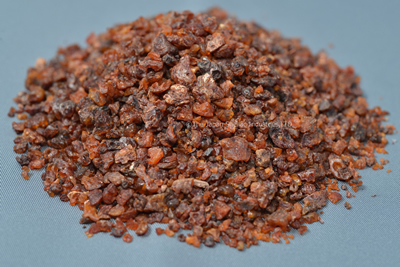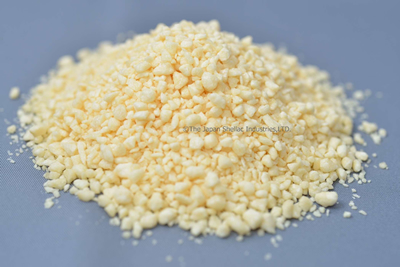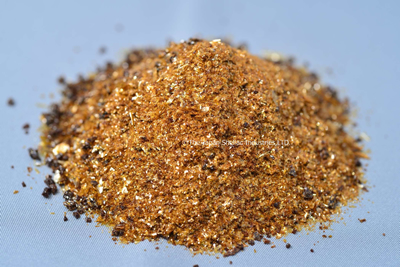What is Shellac?
Lac is the resinous secretion of lac insect and its color is Laccifer lacca Kerr parasite on certain trees in Leguminosae and Moraceae plant. It forms the resinous layers like stick making the lumps around the twigs, and is called Sticklac. Sticklac is crushed, sieved and removed insect bodies, pieces of twigs and water soluble dye, etc. by washing, and is named Seedlac. Lac dye is the water soluble coloring matter refined, and is used as edible colors or dye. Shellac is a natural polyester resin refined from Seedlac.
Shellac Manufacturing Process
Ordinary Shellac is produced either by a process of filtration in the molten state or by solvent process. Shellac has two kinds of types depending on retain most of its wax or dewaxed. In addition, Shellac is graded by whether it purified or bleached its natural color.
Bleached (White) Shellac is prepared by dissolving the Lac in aqueous sodium carbonate, bleaching the solution with sodium hypochlorite and precipitating the Bleached Shellac with hydrochloric acid. Removal of the wax, by filtration, during the process results in Bleached Dewaxed Shellac.
Shellac is also manufactured by thermal fusion method in foreign countries as well.
Shellac Characteristics
- Shellac is the only thermo-setting resin as natural resin.
- It is soluble well in alcohol in the normal temperature, and melt easily for heating, but not influenced to heat and solvents after once curing.
- Strong oil resistance.
- Nonconductor of electricity.
- Excellent abrasion resistance.
- After coating the varnish, the thin film of Shellac forms the smooth surface that is rich in abrasion resistance, adhesion and durability.
- It is insoluble in water and many of solvents except alcohol.




